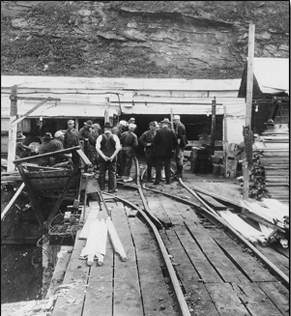A recent news story reminded me of a similar story in my husband’s
family. The story was about finding skeletal remains of a man who
had been missing for ten years. A skull, next to a pair of hunting boots, was
found; and using DNA, it was determined that it was “7.9 billion times more
likely to have originated from a biological sibling” than not. [1] After ten years, this man had been found. There was, and is, speculation about
his mental health at the time of his disappearance.
In 1918, DNA was not available to identify skeletal remains. However, a
pair of boots and a jack knife were used to identify the remains of Peder
Marten “John” Pederson, my husband’s great-uncle.
Peder was born in Minneapolis, Minnesota, in 1886 to John V. and Randi
Iverson Pederson. He had
 |
| 1886 |
 |
| Peder & Sophie about 1892 |
Peder’s parents were both born in Norway. His father, John, worked as a
mailman in Minneapolis; and sometime after 1900, John purchased land in Greenbush
Township, Mille Lacs County, Minnesota, which became the “family farm.”
Peder and Sophie were close growing up, and Peder served as the best man
at her wedding to Henry Foster on October 20, 1908, in Mille Lacs County. Sometime after that date, Peder disappeared, not to be found until May 1918.
On May 16, 1918, the Mille Lacs County Times published the story of
finding Peder with this headline: Remains of John Pederson, Who Disappeared 9 Years Ago, Found in Swamp in Greenbush Township - Skeleton of Young Man Identified by Boots and Jack Knife Found on the Ground by the Remains.
It seems that a farmer, who was rebuilding a fence along his property
line, found the remains in a marshy swamp that was part of his property. The
marsh happened to be dry due to a dry season; thus, the ability to find the
skeleton. However, the skull was missing. The nature of his death was never
determined.
The newspaper describes the initial search as follows: Searching parties
were organized and the whole country side was carefully searched in an effort
to find some trace of him but without avail.
It was finally decided that he must have left the country, probably
under a spell of mental weakness, as he had been troubled with severe headaches,
and it was thought his mind might have been affected. At times rumors of his having been seen in
various localities reached his parents, but they were unable to locate him.[2]
Peder’s father died without knowing what happened to his son.
Peder was buried in the West Branch Cemetery, in Greenbush Township, just outside the cemetery
boundary line, and without a headstone. Unless you know where to look (there’s
a depression in the ground), there is no evidence that Peder ever existed.
 |
| L to R: Henry Forster, Peder Pederson, Sophie Pederson, Randi Pederson October 20, 1908 |
[1] Powers, Pamela. "Missing Dunn County man's remains ID'd." LeaderTelegram.com. N.p., 26 July 2017. Web. 26 July 2017.
[2] “Remains of John
Pederson, Who Disappeared 9 years Ago, Found in Swamp in Greenbush Township.” Mille Lacs County (MN) Times, May 16, 1918










